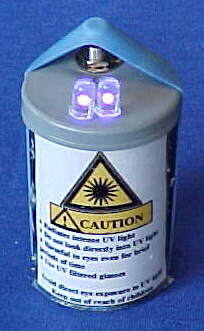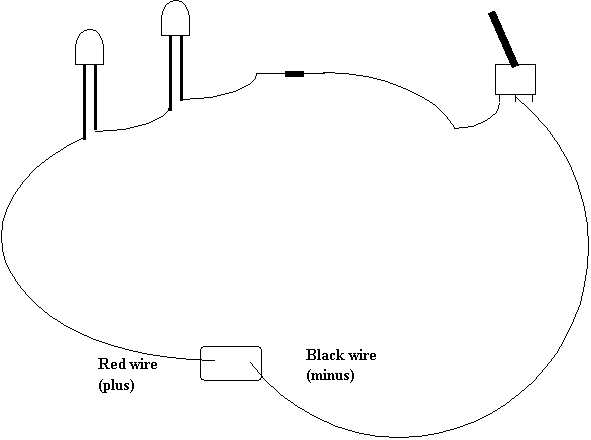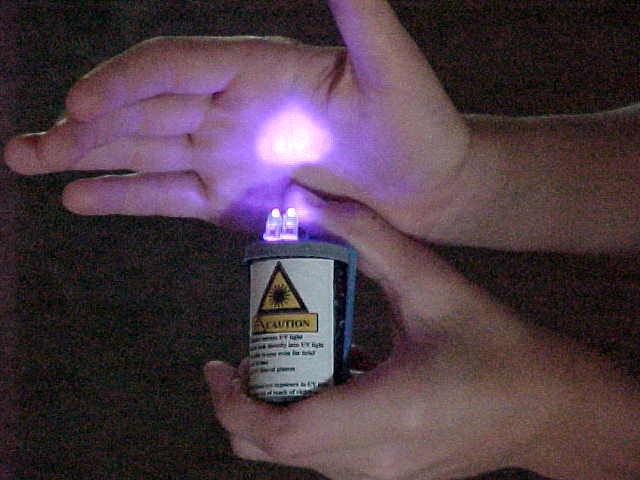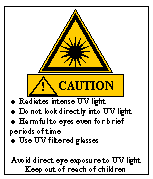
[Title] [text TOC] [image TOC] [Site Search]
 [Donation]
[Donation]

 [Donation]
[Donation]
| Black light LED Flashlight |
|---|

Black light or ultraviolet light can be a lot of fun especially in the dry southwestern United States. Ultraviolet light makes some things glow in the dark. Scorpions, some rocks, and urine are just some of the natural things that are fluorescent. Go exploring at night around your campsite.
It's also fun to explore around the house. Use it to see how well your children cleaned the bathroom! :-) It can also be used to illuminate the band in the new US currency.
The flashlight I made has uses two UV LEDs. It is MUCH brighter than the fluorescent bulb black lights that run on 4-AA batteries and sell for about $10.

The UV LED should have a wavelength of between 300 and 400 nm (nanometers), an intensity of at least 300 millicandelas or mcd, and a beam width of less than 20 degrees.
Sources of UV LEDs:
BG Micro
Protect your eyes when using ultraviolet light. You only have one pair of eyes - take care of them.

Here are some simple rules to follow:
Never look directly into the LED - especially at close range.
Never point the LED at someone's face.
Wear UV filtering glasses/sunglasses.
To test your glasses/sunglasses, find something that glows brightly when the UV light is shone on it. Now place your glasses/sunglasses between the LED and the object. If the object stops glowing or dims significantly, then you are set. If the object continues to glow at almost the same intensity look for a better pair of sunglasses.

Place a warning label like the one above on all UV sources.
Short-term symptoms of UV exposure take 30 minutes to several hours to appear. The symptoms include a burning sensation like "sand in the eyes" and bright objects will look like they have a haze around them. Mild cases will clear up in a day or so. However, it might be a good idea to see an eye doctor and tell him you have been exposed to UV-A radiation. UV does cause long-term eye problems like cataracts.
DISCLAIMER: I shall not be held responsible for any damage arising from your use or misuse of the information on this page.
Ready for more fun with LEDs? Try these out: